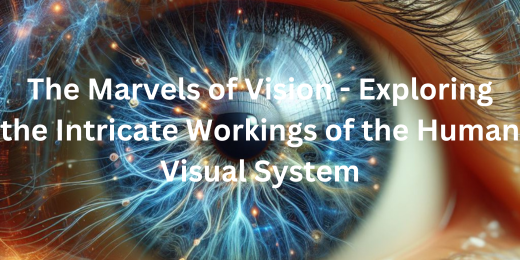The human visual system is a fascinating marvel that enables us to perceive and interpret the world around us. This intricate system allows us to see the beauty of nature, appreciate art, navigate our surroundings, and engage in countless daily activities. Our eyes, along with the various components of the visual system, work in harmony to capture, process, and transmit visual information to the brain.
From the cornea and iris to the lens and retina, each part plays a vital role in the complex process of vision. Understanding the wonders of the human visual system not only enhances our appreciation for this incredible mechanism but also emphasizes the importance of maintaining its health and seeking prompt care for any vision-related issues.
The Anatomy of the Human Visual System
Understanding the intricate anatomy of the human visual system is essential in comprehending the remarkable process of vision. The visual system comprises various components that work together seamlessly to enable us to perceive the world around us. Starting with the cornea and iris, which focus incoming light, the lens further refracts the light onto the retina, where the image is converted into electrical signals. These signals are then transmitted through the optic nerve to the brain, where they are processed and interpreted.
The complexity and precision of the human visual system are awe-inspiring, highlighting the importance of each component and their collective role in facilitating our ability to see. Being a stickler for understanding this anatomy empowers us to appreciate the wonders of our visual system and take the necessary steps to maintain its health and well-being. Similarly, the auditory system processes sound waves, converting them into neural signals that the brain interprets as sound perception.
How the Human Visual System Works
The human visual system is a marvel of intricate processes that allow us to perceive and interpret the world around us. It all begins with the eyes, which act as the gateway for visual information. The cornea and lens focus incoming light onto the retina, a layer of cells at the back of the eye. The retina contains specialized photoreceptor cells called rods and cones that convert light into electrical signals.
These signals then travel through the optic nerve to the brain, where they are processed and assembled into the visual images we perceive. The brain’s visual cortex plays a crucial role in interpreting and making sense of this information. Understanding how the human visual system works allows us to appreciate the complexity and beauty of our visual experiences, and it reminds us to be a stickler for preserving and caring for our eyesight. Likewise, a healthy hepatic system is fostered through a balanced diet, regular exercise, and moderate alcohol intake, promoting optimal liver function.
The Different Types of Vision
The human visual system encompasses various types of vision, each serving a specific purpose in our daily lives. Firstly, we have visual acuity, which refers to the sharpness and clarity of our vision, enabling us to see fine details. Depth perception allows us to perceive the relative distance of objects in our surroundings, while peripheral vision allows us to be aware of our surroundings beyond our central focus.
Colour vision adds vibrancy to our visual experiences, allowing us to differentiate between different hues and shades. Motion detection helps us track moving objects and perceive the fluidity of our environment. By understanding these different types of vision, we gain a comprehensive knowledge of the capabilities and intricacies of the human visual system.
Disorders of the Human Visual System
Disorders of the human visual system can impact our ability to see and perceive the world around us. Various conditions can affect different parts of the visual system, leading to visual impairments. Common disorders include myopia (short-sightedness), hyperopia (long-sightedness), astigmatism (irregular curvature of the cornea), and cataracts (clouding of the eye’s lens). These disorders can cause blurred vision, difficulty focusing, or decreased visual acuity.
Other more severe conditions, such as glaucoma and macular degeneration, can result in permanent vision loss if not managed properly. Regular eye examinations, early detection, and appropriate treatment are essential in maintaining good eye health and addressing these disorders. By being a stickler for proactive eye care, we can preserve the health and functionality of our human visual system.
Conclusion: The Future of Vision
The future of vision holds great promise as advancements in technology and research continue to shape our understanding of the human visual system. With ongoing developments in fields like artificial intelligence, virtual reality, and bionic implants, we can anticipate breakthroughs that may revolutionize vision correction, enhance visual acuity, and provide solutions for various visual impairments.
These advancements, combined with a growing emphasis on proactive eye care and early detection of visual disorders, offer hope for a future where everyone can enjoy optimal eye health and well-being. By being a stickler for staying informed about the latest research and technological advancements, we can actively participate in shaping the future of the human visual system, enabling a world where sight is cherished and preserved for generations to come.



